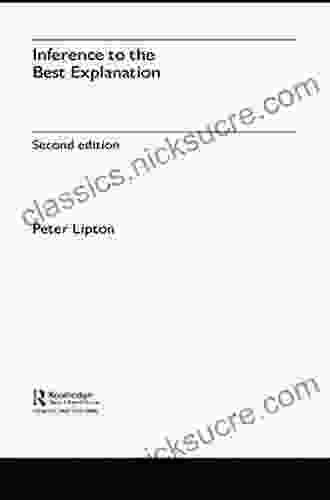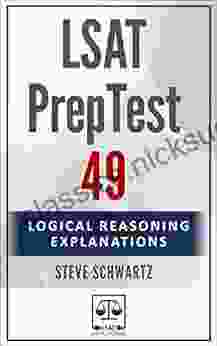Inference to the best explanation (IBE) is a method of reasoning that seeks to find the explanation that is most likely to be true based on the available evidence. IBE is often used in science, history, and law, where it can be difficult to determine the exact cause of an event. By considering all of the possible explanations and weighing the evidence for and against each one, IBE can help us to reach the most reasonable .
The Structure of IBE
IBE has three main components:
4.5 out of 5
| Language | : | English |
| File size | : | 381 KB |
| Text-to-Speech | : | Enabled |
| Screen Reader | : | Supported |
| Enhanced typesetting | : | Enabled |
| Word Wise | : | Enabled |
| Print length | : | 234 pages |
- **The explanandum:** The phenomenon or event that needs to be explained.
- **The explanans:** The set of evidence that is used to explain the explanandum.
- **The inference:** The that is drawn from the explanans.
The inference in IBE is typically inductive, meaning that it is not guaranteed to be true. However, it is the most likely explanation based on the available evidence.
Evaluating IBE
There are a number of factors that can be used to evaluate the strength of an IBE argument. These include:
- The number of possible explanations: The more possible explanations there are, the weaker the IBE argument will be.
- The quality of the evidence: The stronger the evidence, the stronger the IBE argument will be.
- The coherence of the explanation: The more coherent the explanation, the stronger the IBE argument will be.
IBE in Science
IBE is a powerful tool that can be used to make inferences about the natural world. For example, scientists use IBE to explain the behavior of subatomic particles, the formation of stars, and the evolution of life. IBE can also be used to test hypotheses and to make predictions about future events.
IBE in History
IBE is also used by historians to explain past events. For example, historians use IBE to explain the causes of the American Revolution, the outbreak of World War II, and the rise and fall of the Roman Empire. IBE can help historians to understand the complex factors that have shaped human history.
IBE in Law
IBE is used in law to determine the guilt or innocence of a defendant. In a criminal case, the prosecution must present evidence that proves beyond a reasonable doubt that the defendant is guilty. The defense can then present evidence that raises reasonable doubt about the defendant's guilt. The jury will then weigh the evidence presented by both sides and decide whether the defendant is guilty or not guilty.
IBE is a powerful tool that can be used to reason about a wide range of topics. By considering all of the possible explanations and weighing the evidence for and against each one, IBE can help us to reach the most reasonable .


































































































































































































































































































































































































































































































































































